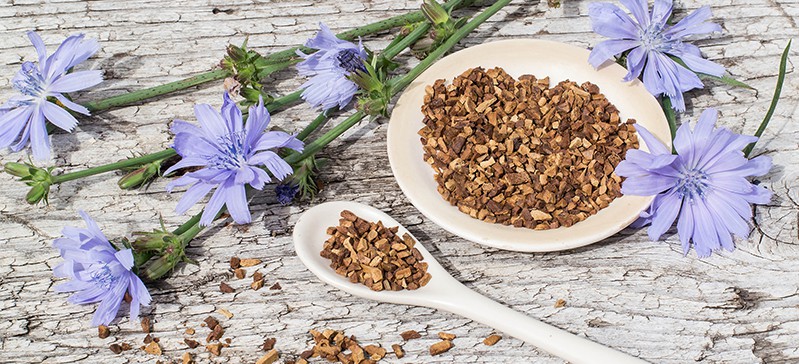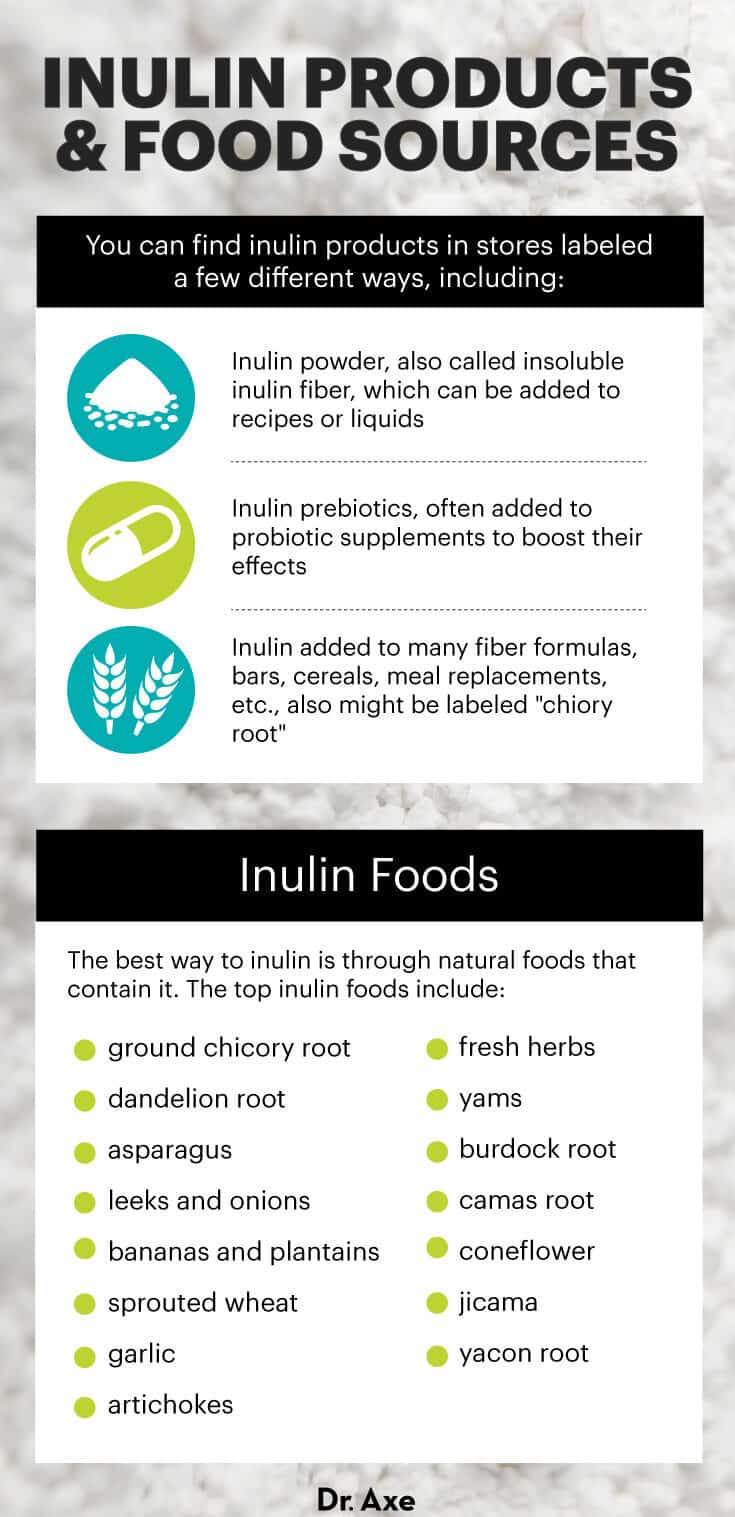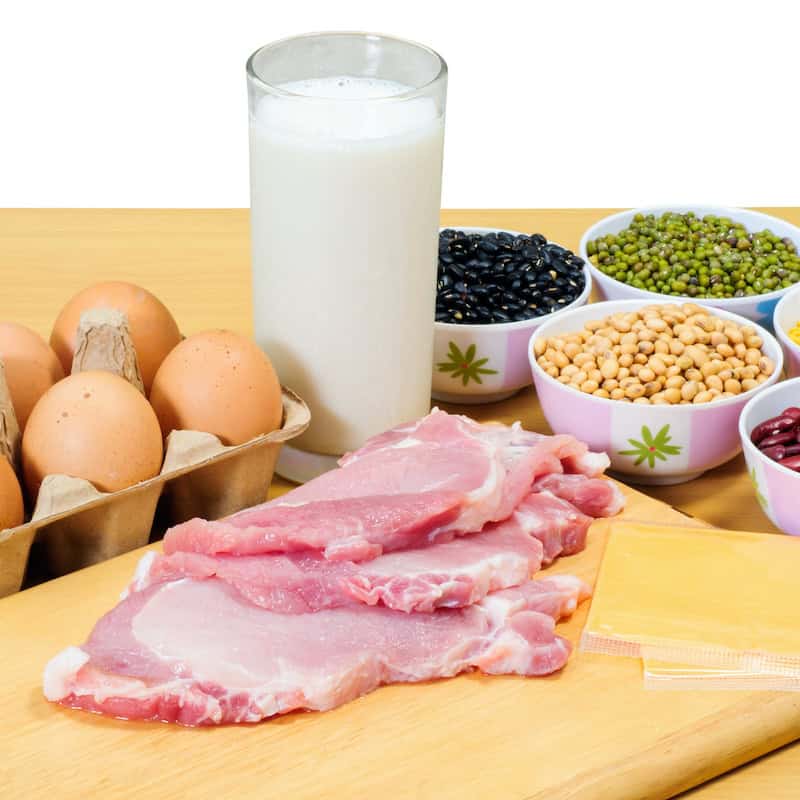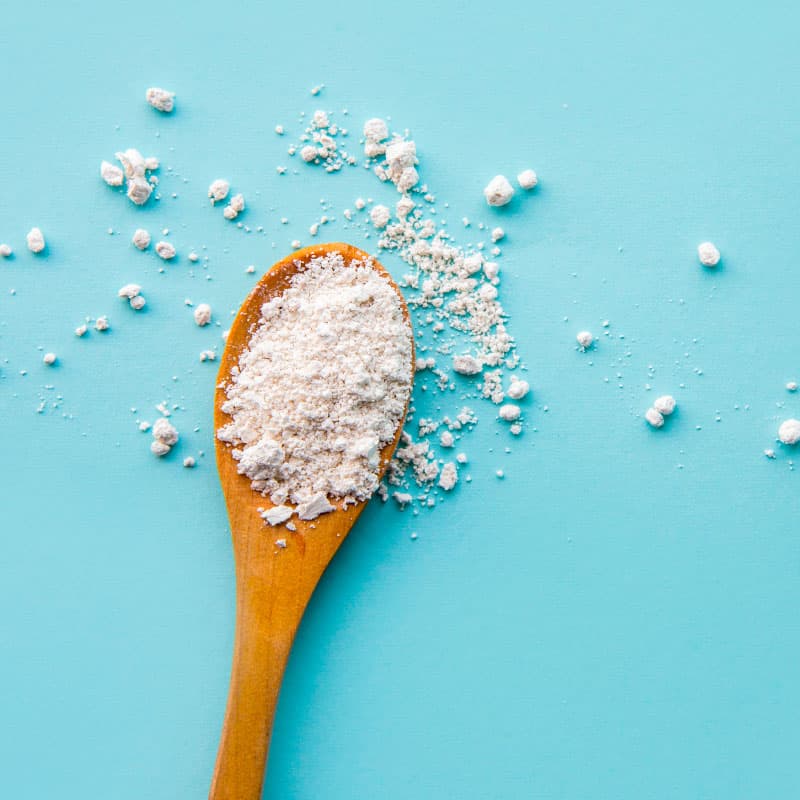This Dr. Axe content is medically reviewed or fact checked to ensure factually accurate information.
With strict editorial sourcing guidelines, we only link to academic research institutions, reputable media sites and, when research is available, medically peer-reviewed studies. Note that the numbers in parentheses (1, 2, etc.) are clickable links to these studies.
The information in our articles is NOT intended to replace a one-on-one relationship with a qualified health care professional and is not intended as medical advice.
This article is based on scientific evidence, written by experts and fact checked by our trained editorial staff. Note that the numbers in parentheses (1, 2, etc.) are clickable links to medically peer-reviewed studies.
Our team includes licensed nutritionists and dietitians, certified health education specialists, as well as certified strength and conditioning specialists, personal trainers and corrective exercise specialists. Our team aims to be not only thorough with its research, but also objective and unbiased.
The information in our articles is NOT intended to replace a one-on-one relationship with a qualified health care professional and is not intended as medical advice.
Inulin: the Prebiotic Fiber with Many Health Benefits
January 15, 2024

We all know how important fiber-rich foods are for weight management, digestive health and regular bowel movements, among other functions. But did you know there’s a type of fiber called inulin that can improve gut, heart and metabolic health as well?
While there are various types of inulin, they all have in common their ability to act like prebiotic fibers. This means they’re not able to be broken down or absorbed once they enter the digestive tract — and it’s this unique attribute that provides so many of inulin’s health benefits.
Because inulin fiber is not digested by enzymes in the human body, it’s fermentable and lower in calories than sugar and other carbohydrates. As it passes through your digestive system it feeds good bacteria in your gut (also known as probiotics), while clearing the body of particles including cholesterol, and making you feel fuller, too.
What Is Inulin?
Inulin is a soluble plant fiber that’s present in high amounts in the chicory root plant, along with an estimated 36,000 other plants! Some foods that contain inulin include whole wheat, onions, bananas, garlic, asparagus and Jerusalem artichokes — plants that are sometimes called prebiotic foods.
Dietary fibers like inulin have been used for hundreds of years to improve bowel functions and gut health, curb appetite, and help maintain heart health, all completely naturally.
Technically inulin is a type of fructan, oligofructose carbohydrate. It’s present inside the roots and stems of plants as a means of storing energy and regulating the plant’s internal temperature. It contains about one-fourth of the calories of white sugar per gram and has minimal effects on blood glucose levels, making it helpful for diabetics.
It also has osmotically active properties (a benefit to plants because this helps them resist cold temperatures and survive) and a high molecular weight. This gives it the ability to absorb liquid and to have a natural resistance to digestive enzymes produced by humans.
What is inulin good for in terms of supporting human health? Studies show it’s especially valuable because it has important “prebiotic effects.” It allows healthy probiotics that make up the human microbiome to thrive, repopulate and survive. It also clings to cholesterol in the GI tract, which can protect against metabolic syndrome.
Benefits
1. Reduces Constipation
How does inulin make you poop? Due to its chemical composition, when inulin is mixed with liquid it forms a creamy gel that’s ideal for relieving constipation. When gelled, it has a structure similar to lipids (fats) that also help lubricate the digestive system and lessen risk for things like hemorrhoids.
Not only do fructans work by increasing faecal biomass and water content of poop, but research shows they also improve bowel habits because of how they positively affect gastrointestinal functions and rapidly ferment in the colon to produce healthy bacteria.
A 2017 randomized, double-blind, placebo-controlled study found that supplementing with inulin was effective in healthy adult volunteers with chronic constipation at significantly improving bowel function compared to placebo. In this study, participants took 4 grams of Orafti® Inulin three times per day.
A 2011 study published in the International Journal of Food Sciences and Nutrition examined the effects of chicory inulin in constipated elderly people. Over 28 days, participants took 15 grams of the chicory root, and researchers found that “daily supplementation with 15 grams inulin improves constipation and quality of life in an elderly population with constipation.” Other studies have found positive effects on bowel function in children, too.
2. Improves Gut Health by Acting Like a Prebiotic
As a non-digestible prebiotic, inulin passes through the large intestines unabsorbed. During this process, it naturally ferments and feeds the healthy intestinal microflora (bacterial organisms, including bifidobacterium) that populate the gut.
Research has shown that oligofructose acts like a prebiotic that impacts the lining of the gut and colon, changing the profile of organisms present and modulating the endocrine and immune functions.
By stimulating healthy bacteria to grow, soluble fiber can decrease the number of potentially harmful yeast, parasites and bacterial species living in the body that trigger inflammation. Studies suggest this is why inulin-type fructans have been found to reduce the risk of colon carcinogenesis and improve management of inflammatory bowel diseases.
3. Helps Curb Appetite
Even though it’s low in absorbable calories (it provides about 1.5 calories per gram), this type of fiber can help to make you feel less hungry.
Dietitians recommend that people trying to learn how to lose weight work on increasing their fiber intake in order to feel more satisfied and to deal with fewer blood sugar fluctuations.
When combined with water, inulin bulks up and forms a gel-like substance that expands in the digestive tract. This may help decrease appetite and cravings — potentially helping with weight loss. It also slows the process of food emptying from the stomach and takes up more volume, both which contribute to satiety after eating.
4. Boosts Heart Health and Lowers Metabolic Syndrome Risk Factors
As it passes through the digestive system unabsorbed by digestive enzymes, inulin takes with it toxins, waste, fat and cholesterol particles. For this reason a high-fiber diet has been tied to heart health.
Research shows that increasing your fiber intake (especially the soluble type) helps lower blood cholesterol, reduces your risk for arteriosclerosis and can help you maintain healthy glucose levels.
There seems to be an inverse association between fiber intake and systolic and diastolic blood pressure, total cholesterol levels, and triglycerides. Soluble fibers in the diet can help lower LDL (“bad”) blood cholesterol by interfering with the absorption of dietary cholesterol.
Another benefit of inulin, according to studies, is the fact that it doesn’t cause insulin to be secreted and won’t raise blood sugar since its carbohydrates/sugars cannot be broken down.
5. Can Replace Sugar and Flour in Recipes
Oligosaccharides are used in food manufacturing and home cooking to improve food’s taste, texture, moisture level and health benefits. While inulin has a very mild taste that makes it versatile in recipes, some people find that it tastes slightly sweet. Compared to sugar (sucrose) it’s said to be about 10 times less sweet.
The chicory plant, the most common and concentrated source of inulin, has chemical similarities to the sugar beet plant that’s often used to derive sugar.
If you follow a low-carb diet or the keto diet, inulin can be used to improve the taste and texture of sugar-free or flour-free recipes. It contains about 25 percent to 35 percent sugar and starches that work similarly to grain-based flours to absorb water and thicken recipes. It’s also soluble in hot water, which means as long as you heat it it will absorb liquid and can be used in teas, drinks or baked goods.
Since it’s non-digestible and forms a gel when mixed with liquid, it’s also able to be used in place of oil (the reason you’ll find it in some low-fat cheeses, sauces, soups and condiments).
6. Increases Calcium Absorption
Certain studies have found that increasing your fiber intake may help improve absorption of electrolytes, including calcium and possibly magnesium. How so? It comes down to the beneficial effects of prebiotic inulin within the gut.
A 2005 study published in the American Journal of Clinical Nutrition found that in high-risk populations for calcium deficiency (especially younger girls and older women), the use of chicory inulin helps increase proper absorption of calcium, which may enhance bone mineralization and protection against disorders like osteoporosis.

Uses
As you can see from the benefits explained above, research demonstrates there are many uses of inulin-type prebiotics, including:
- gastrointestinal health
- colon cancer prevention
- better blood sugar control and protection against type 2 diabetes
- support for infant nutrition and growth and development in kids
- healthier cholesterol levels and improved lipid metabolism
- improved bone mineralization
- protection from fatty liver disease
- protection from obesity
- enhanced immunity due to probiotic growth
Top Foods
Inulin is found plant foods that are referred to as prebiotic foods.
While supplements are available, the best way to get inulin is through your diet. Some of the best inulin foods include:
- ground chicory root fiber (the most common source of inulin due to its extremely high concentration)
- dandelion root
- asparagus
- leeks and onions
- bananas and plantains (especially when they’re slightly green)
- sprouted wheat (such as the kind used in Ezekiel bread)
- garlic
- Jerusalem artichokes
- fresh herbs
- yams
- burdock root
- camas root
- coneflower, also called echinacea
- jicama
- yacon root
Good bacteria basically live off of fibers within the diet, which is why high-fiber foods like fruit, leafy greens and beans/legumes are said to be good for gut health.
Can you taste inulin or tell if it’s in something you’re eating? Normally you can’t. It’s almost totally colorless and odorless, although it does have a slightly sweet taste that some people can pick up on. Because it doesn’t add much to the taste or smell of your foods, it’s easy to use in recipes, mixed into smoothies, or just on its own stirred into water or juice.
You can use inulin as a fiber supplement or look for foods that already contain it. Because of its lubricating, water-absorbing, enzyme-resistant qualities, inulin is used in food manufacturing very often to give products a uniform texture and add chewiness and bulk. It’s added to more and more packaged foods because it has adaptable, unique characteristics in terms of its ability to blend with any taste well, improve the food’s “mouth feel,” and even to replace other ingredients like sugar, fat and flour.
Supplement Dosage
You can find inulin supplements and products in health food stores and online. There is more than one type of inulin fiber sold as a dietary supplement. Most types are derived from the chicory root plant.
Inulin supplements may be labeled a few different ways, including:
- inulin powder, also called insoluble inulin fiber. This type can be added to recipes or mixed into liquids.
- inulin prebiotics, often added to probiotic supplements to boost their effects.
- inulin added to fiber formulas, bars, cereals, meal replacements, etc. This also might be labeled “chicory root inulin.”
While there isn’t a standard daily requirement of inulin that has been established, consuming it regularly can contribute to your daily fiber intake.
Archaeological evidence suggests that ancient populations who ate mostly plant-based diets probably consumed about 135 grams of prebiotic inulin-type fructans every single day.
In the U.S., adults are told to aim for 20–35 grams of fiber per day, especially from whole foods. However, surveys show that most children and adults fall short in terms of consuming enough dietary fiber, especially those who follow low-carb diets.
Because inulin can be added to common foods like oatmeal, smoothies, juices and baked goods without affecting their taste, it’s very simple to use.
- Start by incorporating more high-fiber foods in your diet, and/or by supplementing with a small dose of fiber powder equalling about 3–5 grams per day.
- Drink plenty of water when increasing your fiber intake and gradually consume more if you respond to a high-fiber diet well.
- You may choose to keep consuming more if you experience good results, up to 10–30 grams per day. If this seems like too much, stick with a daily dose of about 5–15 grams.
Inulin vs. Psyllium
Inulin and psyllium husk are both soluble fibers, one of three types of dietary fibers (the others are insoluble fiber and resistant starch).
Psyllium husk is extracted from rushed seeds or husks of the plantago ovata plant. It’s main benefits include helping to improve digestion and also supporting normal cholesterol levels. You’ll find psyllium in powder fiber supplements (such as Metamucil), as well as processed high-fiber snacks and beverages.
The main differences between these two fiber supplements is that psyllium absorbs more water and is not as fermentable as inulin in the gut. Psyllium is soluble in water, so it expands and become sticky and glutinous once eaten, the reason it can help prevent constipation. Not only can it softens hard stool and increase transit rate, but it also improves the consistency of loose/liquid stools and reduces diarrhea.
Inulin doesn’t have as much of a water-holding capacity and, therefore, does not have as strong of natural laxative effects.
Risks and Side Effects
What are the side effects of inulin? Inulin is non-allergic and safe for most people to consume — considering it’s completely natural and present in many foods.
Studies have shown that chicory is rarely allergenic, and when foods containing inulin cause reactions, it’s usually due to other compounding ingredients like peanuts, milk, soy, shellfish and wheat.
That being said, some people may experience inulin side effects if they don’t react well to eating high amounts of certain types of fibers or carbohydrates. These side effects can include electrolyte disorders, diarrhea and nausea.
Inulin is considered a FODMAP, a class of carbohydrates that are rapidly fermented in the colon and can produce gas and digestive issues for some people.
For people with a sensitivity to FODMAPs (like those with irritable bowel syndrome or an inflammatory bowel disorder), drawing water into the colon in large quantities can lead to worsened symptoms, like cramps, gas and bloated stomach. It’s a good idea to add inulin or other concentrated fibers to your diet slowly to test their effects and also to drink plenty of water to help with lubrication.
Final Thoughts
- What is inulin? It’s a type of prebiotic fiber/soluble plant fiber that’s present in high amounts in the chicory root plant, along with an estimated 36,000 other plants.
- Health benefits of inulin include improving gut health by feeding probiotic bacteria, and taking up a lot room in the digestive tract once eaten, helping to make you feel fuller.
- It also reduces constipation, boosts heart health, lowers metabolic syndrome risk factors, can replace sugar and flour in recipes, and increases calcium absorption.
- In supplement form, it’s added to many powder fiber formulas, high-fiber cereals, meal replacements, etc., On ingredient labels it may be labeled as “chicory root.”
- The best inulin food sources are ground chicory root, dandelion root, asparagus, leeks, onions, bananas, plantains, sprouted wheat, garlic, artichokes, fresh herbs, yams, burdock root, camas root, coneflower, jicama and yacon root.








